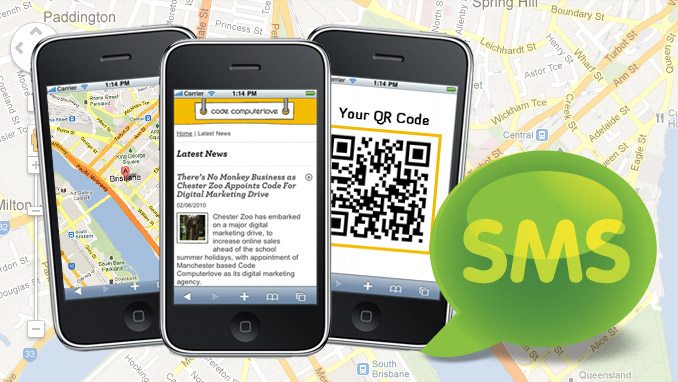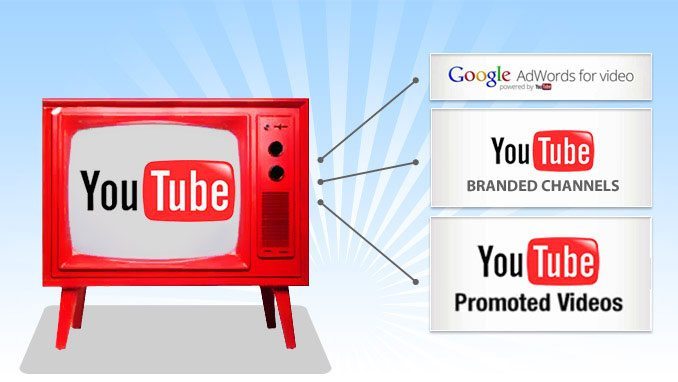


Mobile marketing is used when information is sent in the form of text or visual images, to the mobile phone or other handheld device, of a customer. It can range from simple text message, to more complex audio/visual messages. Regardless of what is being sent, small businesses should now figure out that using mobile marketing, can be a great way to drive up sales. Here are 5 ways small business can use on their mobile marketing campaigns.
1. Invest on the Power of SMS Marketing
The real idea behind SMS marketing is to collect the confirmed opt in cell phone numbers of your customers or potential customers so you can market to them over and over. If you have a large targeted list of clients whenever you have a special offer, you can send out an SMS brigade using your SMS service to keep in touch with your customers.
This is known as extremely effective since 90% of all SMS messages are opened in the first 5 minutes. SMS marketing gets way more immediate and effective than email marketing in this manner.
Some of these text message marketing ideas include mobile coupons wherein you send text offering to loyal customers along with a discount.
Another is mobile reminders where service-related industries and retailers can alert customers about upcoming sales, and software providers can let users know when a new release is available.
Having a large list of your customer’s cell numbers and using SMS marketing is very powerful so you do not want to abuse this new medium. The idea is to get customers to like you and your business not to alienate them. There are not just etiquette issues with SMS but legal issues as well.
2. Utilise Google Places – Coupons and Maps
Google noted that going forward they would be integrating some of the great information thatís been buried on Place pages into your web search experience across all Google platforms.
Places, mobile search, reviews, looking for direction, coupons, these are but the highlights of how Google Places can benefit your small business as long as you’re ready to grab the marketing opportunities and win it.
Google has already started down the path of more widely disseminating its services through Offers (as in free Places Coupons as opposed to daily deals) with their recently updated Shopper App on the iPhone. The noted changes clearly focus on Offers where nearby offers gives users great deals around them, also features map view for nearby offers, and redemption of Google Offers directly from your phone.
They use geo-locator applications to send text coupons to clients shopping in the vicinity of your business. Although the Shopper app is probably makes these free coupons only slightly more visible than they are now.
The idea of ratings as opposed to long form reviews, great resources hidden in Maps with massive amounts of Street view data are also available for customers.
3. Choose QR Codes in Marketing
Mobile marketing is not just for big brands anymore. There are lots of ways small businesses can tap into their customers’ mobile lives. QR codes are a great way to do just that.
Chances are that a large, valuable portion of your target market can scan a QR code. The technology barriers are fading fast, and a good percentage of mobile users owns a smartphone. Combine that with the fact that QR codes are become increasingly accepted, and you’ve got a great way to connect your audience with your brand, even while theyíre on the go.
QR codes can be placed on your marketing objectives through sales, collecting payment, and connecting audiences to content.
All three of those objectives take advantage of the QR code’s unique ability to connect the offline world to your online properties, with a retail-oriented, transactional, or simply informational approach. All of them will help you build relationships with your customers.
And they seem to be cropping up everywhere nowadays that you may even noticed QR codes printed on the envelopes of bills. By printing QR codes on ads, direct mail pieces, and posters they invite users to scan the ads. Once they do that, users can do everything from buying event tickets to watching performer interview videos.
Keep in mind that even though you’re concerned with marketing a small business, your objectives don’t differ much from those of larger companies. You still want to sell more products and services, make it easy for your customers to contact and pay you, and build valuable relationships through engaging content. QR codes are an affordable solution for achieving all of those.
4. Setup Mobile Pay Per Click Campaign
There are many more people accessing the Internet on smartphones these days, so it’s understandable if you want to try to reach this user segment. However, you should consider the nature of your business and its relation to mobile phone searches before you invest the time and money to create a mobile-targeted Pay-Per-Click campaign.
There are some types of business that would benefit immensely from a mobile campaign, though. Bars, restaurants, and other local hot spots could see an increase in foot traffic with a little push toward smartphone users. Supplemented by web local listings (Google Maps, Yelp, Yahoo Local, etc.) with a little PPC that way you can help mobile users find you in your neighborhood.
If you offer a cheap, instant-gratification style product, you might succeed with a mobile PPC campaign. This is especially important for people selling phone applications or ringtones, but could work for any product that doesn’t require a lot of research or thought into the purchase.
Your ad will bring in plenty of targeted traffic at a much cheaper rate. Advertisers need to pay only when users click on the ads to visit their websites. You have to pay for every click but that is much cheaper compared to traditional advertising.
Mobile PPC campaigns aren’t for everyone, but they will become more important over the next few years as mobile internet use continues to rise.
5. Opt for Mobile-Compatible Web Sites
With the popularity of smart phones, tablets, and netbooks in addition to numerous desktop monitors, web designers need to keep in mind the flexibility of website layouts on landing pages and or e-commerce sites.
There are numerous reasons for you to have a mobile version of your site as part of your mobile marketing. Mobiles are the device of choice for many people, and you would want to be accessible to them. According to studies, about 40% of the people who have a mobile phone, use it for going online, and half of them will go online at least once every day.
If you are not someone who is surfing the net from your mobile, then you will soon be left behind. In the near future, most people will be using a mobile phone for browsing. This means that any business that has a presence on the Internet right now should make appropriate changes to make their web site mobile-friendly.
Big and small businesses should realize the importance of having a mobile-compatible web site to boost their mobile marketing. This year and in the years to come, there is a considerable shift in how people plan out the logic behind their web layouts. In fact, mobile-compatible design layouts are becoming more of a necessity than a trend.




